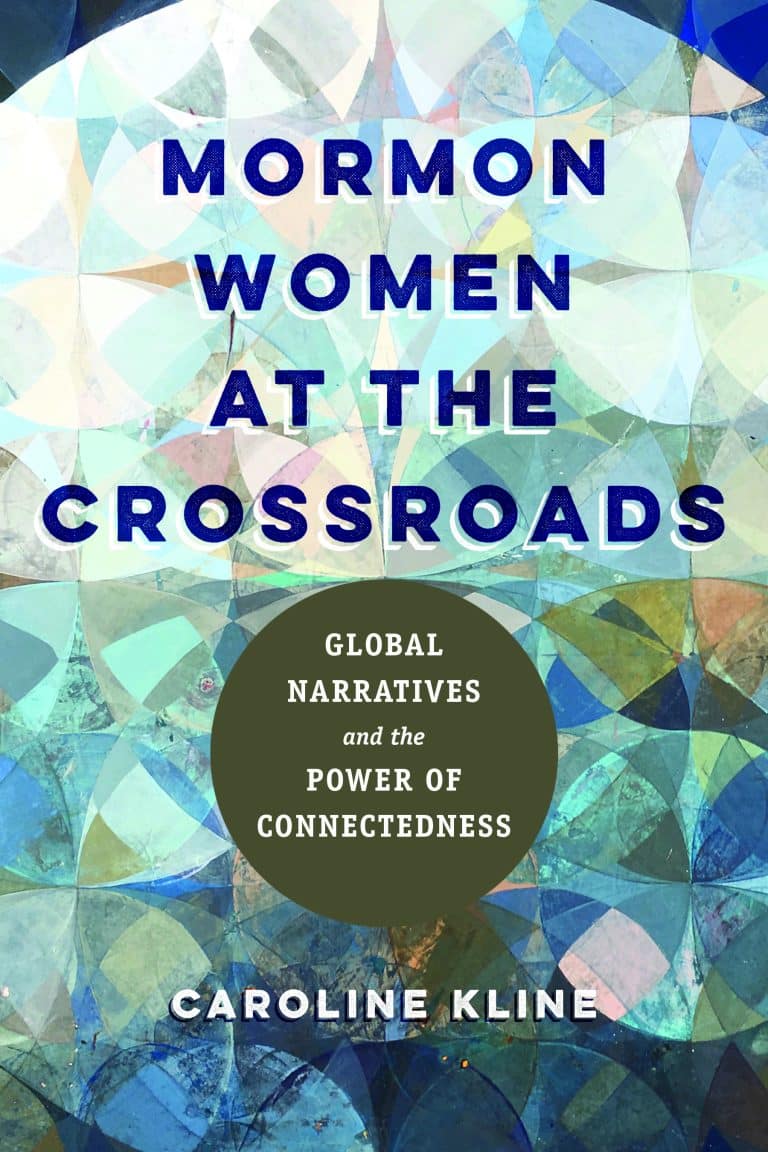Book Review of Caroline Kline’s Mormon Women at the Crossroads: Global Narratives and the Power of Connectedness (University of Illinois Press, 2022)
Caroline Kline’s book, Mormon Women at the Crossroads: Global Narratives and the Power of Connectedness (University of Illinois Press, 2022) leans into the longstanding tension between gender and race within The Church of Jesus Christ of Latter-day Saints. Kline uses oral history and a framework of “non-oppressive connectedness” to illuminate the journeys of people we don’t hear from enough: women of color living complex lives of faith around the globe.
Interrogating the limited lens of Western feminist assumptions, Kline delves into the priorities, opinions, and beliefs about gender and race of different women navigating this patriarchal religion. Kline readily acknowledges her responsibility and limitations as a white researcher and how she pivoted her approach to ensure, to the best of her ability, that these women could speak to their experiences without being hemmed in by the scope of a question. (Her process, and her questions, are outlined in the book.) As a result, Kline finds that using oral history as a primary source has “power and depth,” an approach that can offer “a decolonizing method” by centering these women’s “stories, visions, and priorities” (163). Her refreshing approach creates space for further conversations about intersectionality.
Rather than sticking to the narrow Western, feminist lens of gender equality, Kline identifies a more expansive paradigm, one she calls “non-oppressive connectedness.” This framework — one that, according to Kline, better elucidates their moral orientations — allows her to analyze women’s lives, choices, and agency in relationship to connection. Non-oppressive connectedness “blends elements of female empowerment and liberation with a broader focus on fostering positive and productive relationships in different realms” (back cover).
For example, many women in Mexico found satisfaction in gender roles and “benevolent masculinity” when they saw men being responsible, kind, and engaged in family life. However, when a bishop told a Relief Society group in Botswana that babies born outside of wedlock should be put up for adoption — when single parenthood is common, given wedding expenses that often delay legal marriage — the bishop was practically shunned out of the room. Such a stance, regardless of where it came from, ran contrary to these women’s moral commitments. Many women of color in the United States, often underrepresented in their congregations, privileged freedom from oppression over gender equality when they spoke. Even amid positive accounts, many women around the world could point to moments of pain and, at times, instances of betrayal. This was especially clear when women in Mexico talked about the grief they experienced when the LDS Benemerito High School was turned into an MTC without consulting the community that benefited so much from that educational program. Across the book, we meet women who are living at the crossroads of culture, lived truths, and faith — they have their own internal lights that guide them. “The ability to reject all-or-nothing thinking is a hallmark of the women of color” (124).
The book is packed with individual names with unique stories from around the globe: some uplifting, others heartbreaking, but all poignant and real. Though meaty and well-researched, this book is accessible with narrative, vivid scenes, and quotes that leap off the page. According to Kline, these needed perspectives have a lot to offer the institutional Church. Her book outlines some ways forward if we are to center women of color and honor their experiences, even within this narrow slice of represented countries. Her examples include emphasizing policies combating domestic violence, democratizing decision making, examining education opportunities for social mobility, shifting discourse and leaning toward a Mormon womanist theology of abundance, and promoting more kinship theology. By doing so, Kline says we have the opportunity to “lift up the voices of those on the margins of institutional power…and meaningfully complicate the concerns and paradigms of the privileged center” (169). ⋑




